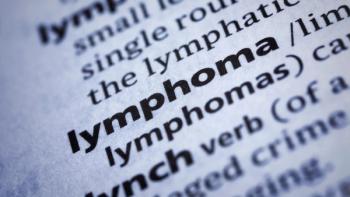
Black Women With Breast Cancer Have a Higher Risk of Developing Lymphedema Than White Women
Black race is associated with a 3.5-fold increased incidence of lymphedema in women with breast cancer treated with axillary lymph node dissection and radiotherapy, according to recent data.
Black women with breast cancer appear to be more likely to develop lymphedema following treatment with axillary lymph node dissection and radiotherapy, compared with White women, according to study results.
The data — which was presented at the 2021 San Antonia Breast Cancer Symposium — showed that Black race was linked to a 3.5-fold increased incidence of lymphedema among the patient population. Moreover, the results indicated that Hispanic women had a 3-fold increased incidence of breast cancer-related lymphedema compared with White women. However, Dr. Andrea V. Barrio, an associate attending physician in the Department of Surgery at Memorial Sloan Kettering Cancer Center in New York, noted that more data is needed to confirm this observation.
“Notably, the number of Hispanic women in our study was small,” Barrio, the study’s lead author, explained while presenting the data during a press briefing.
Although results from prior epidemiological studies have shown that Black women with breast cancer have an increased susceptibility to developing lymphedema, Barrio noted that there has been very little prospective clinical trial data confirming those results.
“The aim of our study was to assess the incidence of lymphedema in a prospective cohort of patients treated with axillary lymph node dissection to identify risk factors associated with lymphedema development and to evaluate the impact of race and ethnicity on lymphedema incidence and severity,” she said.
To evaluate this incidence, Barrio and colleagues assessed the arm volume changes of 276 women (median age, 48 years; range, 40 to 57 years) aged 18 years and older with breast cancer. Enrolled patients had to have received a unilateral axillary lymph node dissection either in the primary setting or after a sentinel lymph node biopsy to be eligible to be included in the analysis.
The study authors collected arm measurements at the beginning of the trial, post-op and every six months for two years. A relative increase in a patient’s arm volume of 10% or greater from baseline indicated the presence of lymphedema.
More than half (60%) of the patient population was White. The remaining patient population makeup included 20% Black, 11% Asian and 6% Hispanic.
Seventy percent of the study population received neoadjuvant chemotherapy (receipt of treatment to shrink a tumor before initiating the main treatment), while the rest underwent upfront surgery. Almost all (94%) of the patients who had upfront surgery and underwent systemic chemotherapy received a taxane-containing regimen, Barrio explained.
The treatment characteristics also indicated that 95% of patients received radiotherapy (RT) and 93% of patients received nodal RT.
When assessing clinical characteristics by race and ethnicity, White and Black women were older (median age, 49 years, respectively). Black and Hispanic patients had a higher baseline BMI compared with the White and Asian patient populations.
At a median follow-up of 22.6 months, 56 patients developed lymphedema. The study results demonstrated that the 12-month lymphedema rate was 8.8%, and that the 24-month lymphedema rate was 24.7%.
Barrio noted that the highest incidence of lymphedema the study authors observed was among Black women with a 24-month lymphedema rate of 39.4%. That rate was compared with 27.7% in Hispanic women, 23.4% in Asian women and 20.5% in White women.
The results also showed that receipt of neoadjuvant chemotherapy was associated with a higher 24-month lymphedema rate compared with upfront surgery at 30.9% versus 11.1%, respectively.
The observed cumulative incidence of lymphedema was highest among Black women with a 24-month lymphedema rate of 39.4% compared to 27.7% in Hispanic women, 23.4% in Asian women and 20.5% in White women.
Of note, Barrio said, among women with lymphedema, lymphedema severity did not vary across racial and ethnic groups with similar relative volume changes observed.
“We observed a higher incidence of lymphedema in Black women treated with axillary lymph node dissection and radiotherapy after adjustment for other variables. Similar findings were observed in Hispanic women but confirmation in a larger data set is needed,” she said.
Barrio also highlighted how neoadjuvant chemotherapy was associated with a significant increase in lymphedema compared with adjuvant therapy in women who received ALND and RT.
She hypothesized as to what may be behind these differences but concluded that future studies should address the biologic mechanisms behind racial disparities in lymphedema development.
“The etiology for the higher observed incidence of lymphedema and black women is largely unknown, but maybe due to race-based differences and inflammatory reactions, tissue fibrosis and lymphatic function,” she said.
Dr. Virginia G. Kaklamani, leader of the Breast Cancer Program at UT Health San Antonia MD Anderson Cancer Center and co-chair of the medical conference, commented during the briefing that this was a very important study for the field.
“We already know that African American women have a higher rate of triple-negative breast cancer, which is one of the most aggressive breast cancers to treat,” she said. “Now we're seeing in a very well conducted trial that African American women have a higher risk of lymphedema. … It's important for us to be able to recognize the symptoms early and treat our patients preemptively so that we can potentially prevent lymphedema in these patients.”
For more news on cancer updates, research and education, don’t forget to




